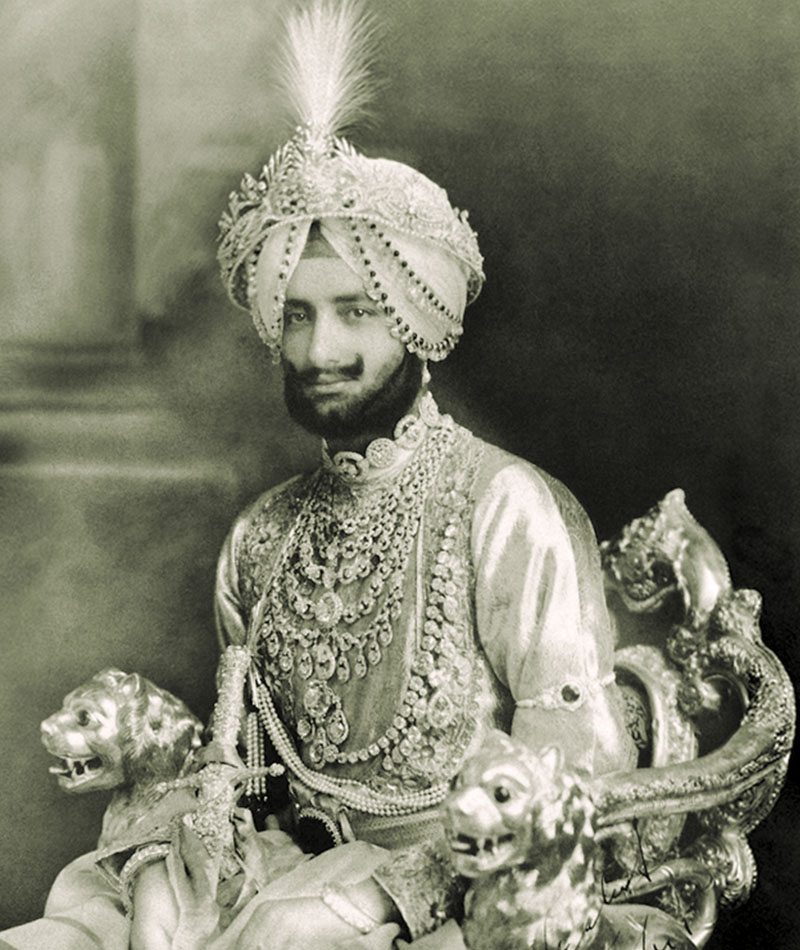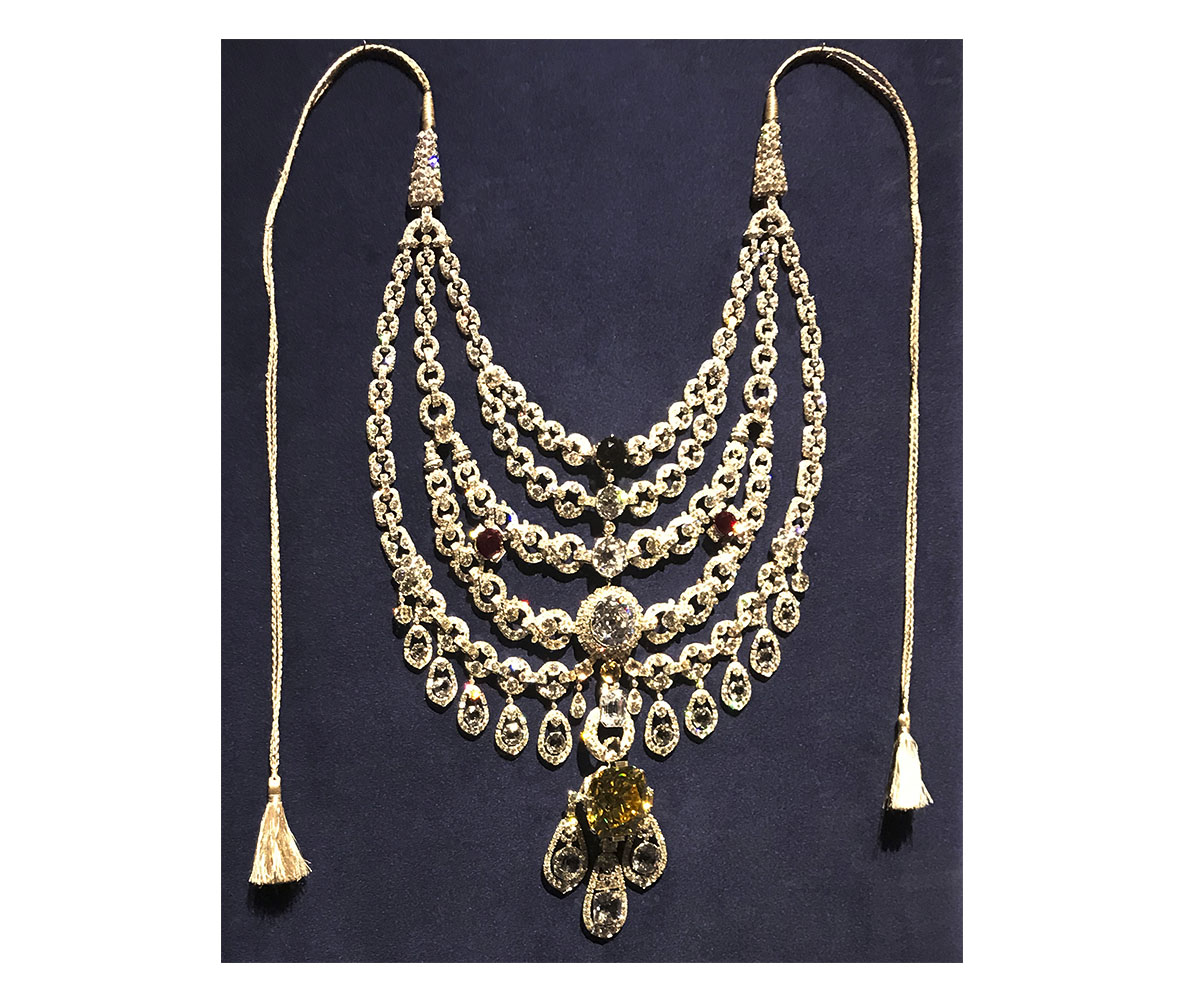ARTICLE
Patiala Necklace
The restored necklace is a part of the Cartier archives. It was displayed as part of the Maharaja: The Splendour of India’s Royal Courts exhibition at the Asian Art Museum, San Francisco in 2011–2012. In 2022, the diamond choker made a public appearance when American celebrity Emma Chamberlain wore it at the Met Gala held at the Metropolitan Museum of Art in New York. On loan from Cartier, the choker attracted heavy publicity and scrutiny, raising questions about the painful history of stolen heritage reaching the West. Such criticism notwithstanding, the movement and provenance of the Patiala Necklace once it left the royal treasury remains unclear.
Bibliography
Cartier Brickell, Francesca. “Cartiers & Patiala Necklace: On Trail of a Lost Marvel.” The Tribune, February 23, 2020. Accessed March 28, 2023. https://www.tribuneindia.com/news/features/cartiers-patiala-necklace-on-trail-of-a-lost-marvel-44541.
Raj, Priya. “This Indian King is Behind One of the Most Expensive Jewellery Pieces Ever Made.” Tatler, June 23, 2022. Accessed March 28, 2023. https://www.tatlerasia.com/style/jewellery/indian-maharaja-cartier-patiala-necklace-history.
“Story Behind Maharaja Bhupinder Singh’s Lost Patiala Necklace.” Times of India, February 2, 2022. Accessed March 28, 2023. https://timesofindia.indiatimes.com/life-style/fashion/luxury/cover-story/story-behind-maharaja-bhupinder-singhs-lost-patiala-necklace/articleshow/89268743.cms.








